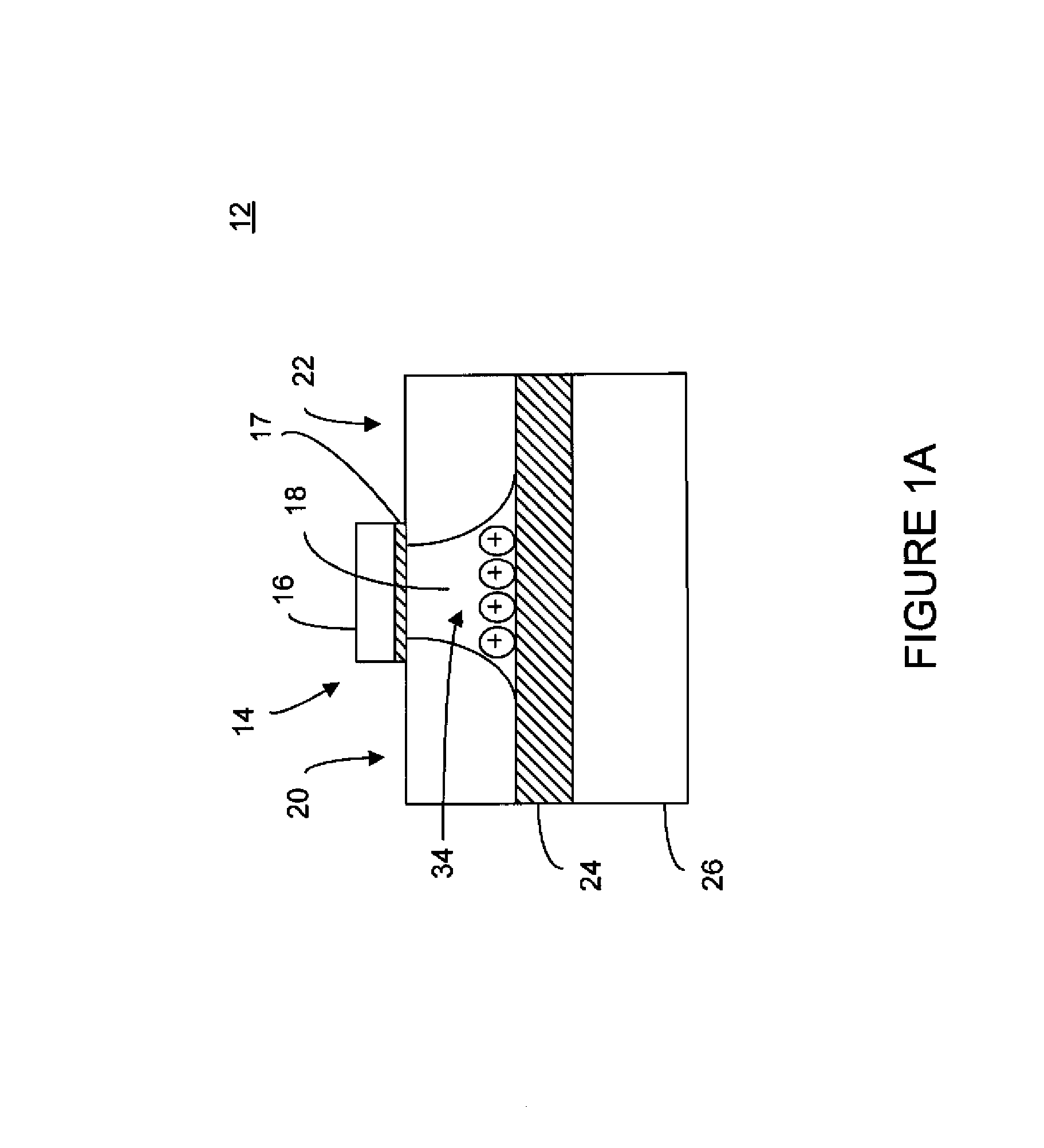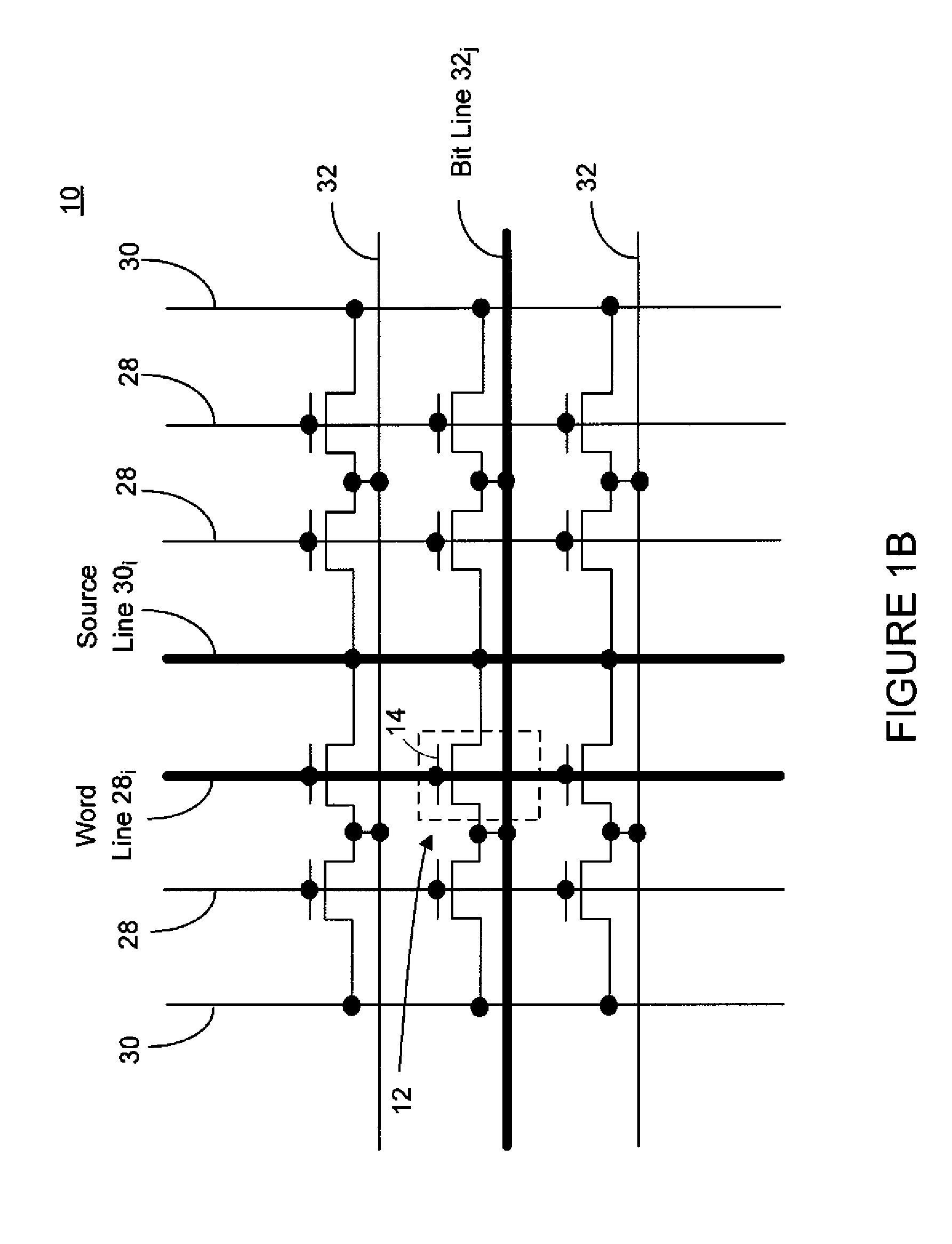Techniques for simultaneously driving a plurality of source lines
a technology of source line and source line, applied in the direction of information storage, static storage, digital storage, etc., can solve the problems of memory cell disruption, large power consumption, and over-the-top charge carrier
- Summary
- Abstract
- Description
- Claims
- Application Information
AI Technical Summary
Benefits of technology
Problems solved by technology
Method used
Image
Examples
Embodiment Construction
[0041]There are many embodiments described and illustrated herein. In one aspect, the present disclosure is directed to a combination of reading / writing methods which comprise simultaneously driving a plurality of source lines (SL). Also, the present disclosure is directed to providing a relatively high voltage when reading from and / or writing to memory cells so as to reduce disruptions to unselected memory cells and increase retention time.
[0042]Referring to FIG. 1A, there is a shown a cross-sectional view of a memory cell 12 in accordance with an embodiment of the present disclosure. The memory cell 12 may comprise a memory transistor 14 (e.g., an N-channel type transistor or a P-channel type transistor) including a source region 20, a drain region 22, and an electrically floating body region 18 disposed between the source region 20 and the drain region 22. Charge carriers 34 may be accumulated in or may be emitted / ejected from the electrically floating body region 18. A data stat...
PUM
 Login to View More
Login to View More Abstract
Description
Claims
Application Information
 Login to View More
Login to View More - R&D
- Intellectual Property
- Life Sciences
- Materials
- Tech Scout
- Unparalleled Data Quality
- Higher Quality Content
- 60% Fewer Hallucinations
Browse by: Latest US Patents, China's latest patents, Technical Efficacy Thesaurus, Application Domain, Technology Topic, Popular Technical Reports.
© 2025 PatSnap. All rights reserved.Legal|Privacy policy|Modern Slavery Act Transparency Statement|Sitemap|About US| Contact US: help@patsnap.com



